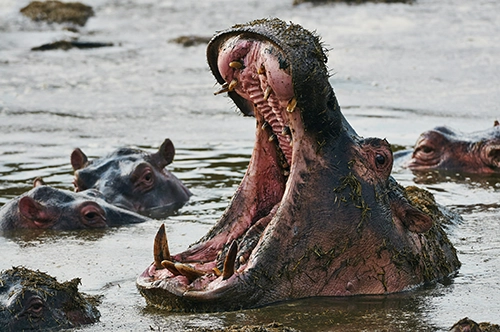
LAND
The largest invasive animal according to the Guinness World Record
Do you know what the largest invasive animal according to the Guinness World Record is? It is the African hippopotamus in Colombia, South America.
How did hippos get there? Well, here is why.
Pablo Escobar (1949–1993) was a notorious Colombian drug lord and one of the most powerful and feared criminals in history. In the early 1980s, during the height of his drug empire, Escobar acquired a variety of exotic animals to populate his zoo, which also included elephants, giraffes, and other wildlife. 4 hippos were among the animals imported to add to the grandeur of his estate. When authorities seized and dismantled Escobar's criminal empire after his death in 1993, many of the animals from his zoo were relocated. However, the hippos posed a unique challenge. Due to their size, weight, and the difficulty of transporting them, authorities decided to leave them in the lakes and waterways near Hacienda Nápoles. A study commissioned by Colombia's environment ministry and published in April 2023 estimated that there are now 181–215 hippos. With no natural predators in the region, their numbers have continued to grow, leading to concerns about their impact on local ecosystems and the potential threats they pose to communities. The Colombian government has been grappling with the challenge of managing and controlling the population of these "cocaine hippos."
As a result, Colombian Environment and Sustainable Development Minister Susana Muhamad announced a plan in Bogota on November 2, 2023, to sterilize, relocate, or euthanize the 'cocaine hippos' descended from those owned by Pablo Escobar. There are many challenges. Sterilization is a time-consuming process, as it involves identifying and capturing the territorial and aggressive 3-ton animals. The initial announcement of the plan highlighted its costliness, with each sterilization carrying a price tag of approximately $9,800. Also, the procedure also poses risks to the hippos, including potential allergic reactions to anesthesia or even death, as well as risks to the health personnel involved.
The presence of cocaine hippos serves as just one illustration of the broader issue where pets transform into invasive animals. The transportation of non-native animals and plants invariably carries risks and impacts the ecosystem, due to various reasons including the lack of natural predators to maintain equilibrium, the transportation of diseases, rapid reproduction, and competition for resources.
Sources:
https://apnews.com/.../colombia-hippopotamuses-pablo...
https://www.guinnessworldrecords.com/.../90275-largest...
https://www.cnn.com/.../pablo-escobars-cocaine.../index.html




